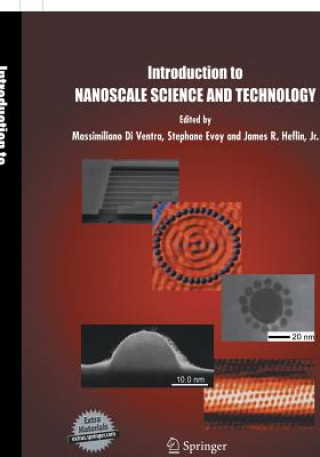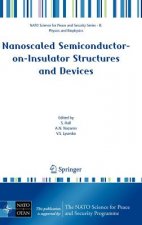
Doručení
Nákupní rádce





Nehodí se? Vůbec nevadí! U nás můžete do 30 dní vrátit
 Dárkový poukaz
V libovolné hodnotě
Dárkový poukaz
V libovolné hodnotě
S dárkovým poukazem nešlápnete vedle. Obdarovaný si za dárkový poukaz může vybrat cokoliv z naší nabídky.
Introduction to Nanoscale Science and Technology
 Angličtina
Angličtina
 480 b
480 b
30 dní na vrácení zboží
Mohlo by vás také zajímat


From the reviews:§"...A class in nanoscale science and technology is daunting for the educator, who must organize a large collection of materials to cover the field, and for the student, who must absorb all the new concepts. This textbook is an excellent resource that allows students from any engineering background to quickly understand the foundations and exciting advances of the field. The example problems with answers and the long list of references in each chapter are a big plus for course tutors. The book is organized into seven sections. The first, nanoscale fabrication and characterization, covers nanolithography, self-assembly, and scanning probe microscopy. Of these, we enjoyed the section on nanolithography most, as it includes many interesting details from industrial manufacturing processes. The chapter on self-assembly also provides an excellent overview by introducing six types of intermolecular interactions and the ways these can be employed to fabricate nanostructures. The second section covers nanomaterials and nanostructures. Out of its 110 pages, 45 are devoted to carbon nanotubes. Fullerenes and quantum dots each have their own chapter that focuses on the properties and applications of these nanostructures. Nanolayer, nanowire, and nanoparticle composites of metals and semiconductors are briefly covered (just 12 pages), with slightly more discussion of specific applications. The section on nanoscale electronics begins with a history of microelectronics before discussing the difficulties in shrinking transistor size further. The discussion of problems (leakage current, hot electrons, doping fluctuations, etc.) and possible solutions (high- k dielectrics, double-gate devices) could easily motivate deeper discussions of nanoscale electrical transport. A chapter on molecular electronics considers transport through alkanes, molecular transistors, and DNA in a simple, qualitative manner we found highly instructive. Nanoscale magnetic systems are examined in the fourth section. The concept of quantum computation is nicely presented, although the discussion of how this can be achieved with controlled spin states is (perhaps necessarily) not clear. We found the chapter on magnetic storage to be one of the most lucid in the book. The giant magnetoresistive effect, operation of spin valves, and issues in magnetic scaling are easier to understand when placed in the context of the modern magnetic hard disk drive. Micro- and nanoelectromechanical systems are covered with an emphasis on the integration of sensing, computation, and communication. Here, the student can see advanced applications of lithography. The sixth section, nanoscale optoelectronics, describes quantum dots, organic optoelectronics, and photonic crystals. The chapter on organic optoelectronics is especially clear in its discussion of the fundamentals of this complicated field. The book concludes with an overview of nanobiotechnology that covers biomimetics, biomolecular motors, and nanofluidics. Because so many authors have contributed to this textbook, it suffers a bit from repetition. However, this also allows sections to be omitted without any adverse effect on student comprehension. We would have liked to see more technology to balance the science; apart from the chapters on lithography and magnetic storage, little more than an acknowledgment is given to commercial applications. Overall, this book serves as an excellent starting point for the study of nanoscale science and technology, and we recommend it to anyone with a modest scientific background. It is also a great vehicle to motivate the study of science at a time when interest is waning. Nanotechnology educators should look no further." (MATERIALS TODAY, June 2005)
Informace o knize
 Angličtina
Angličtina




 Jak nakupovat
Jak nakupovat


























